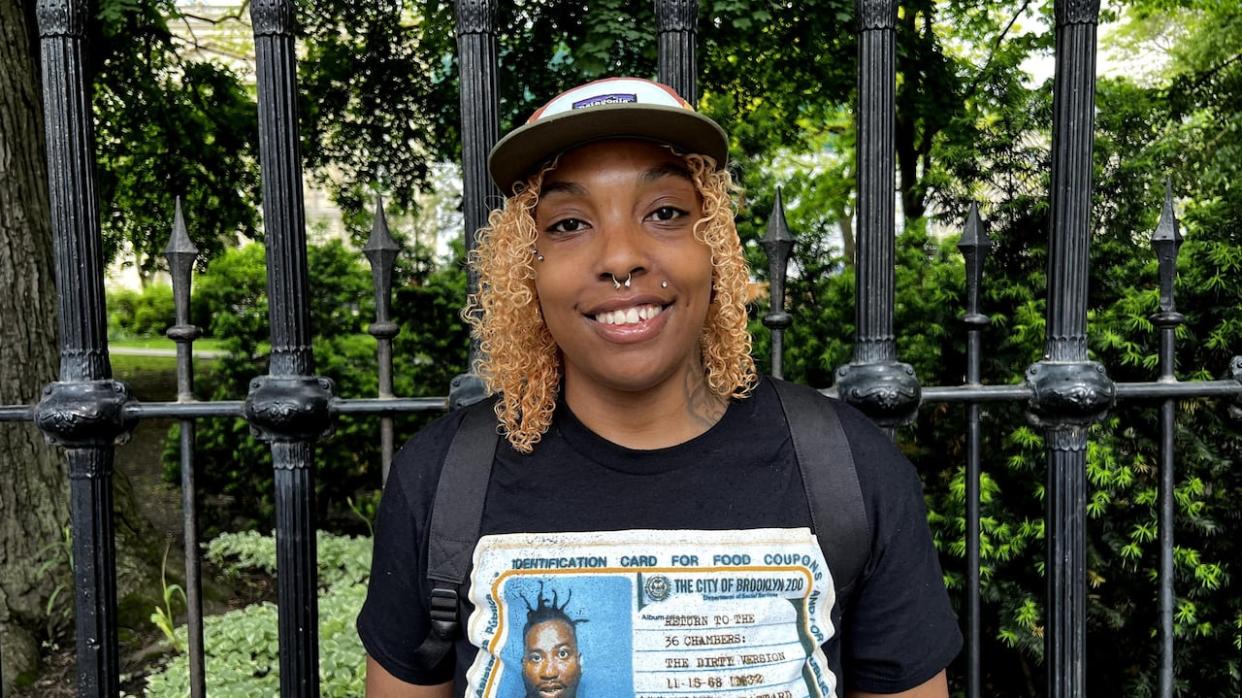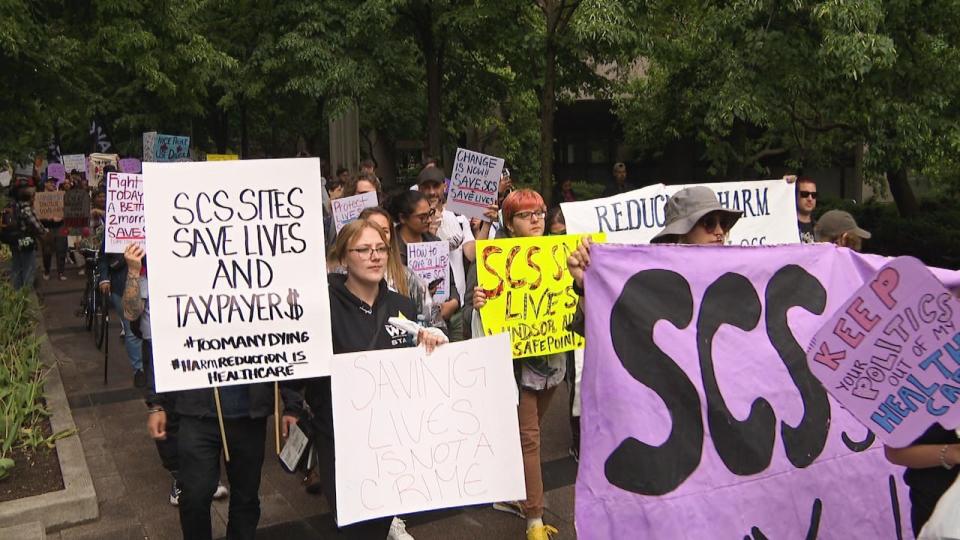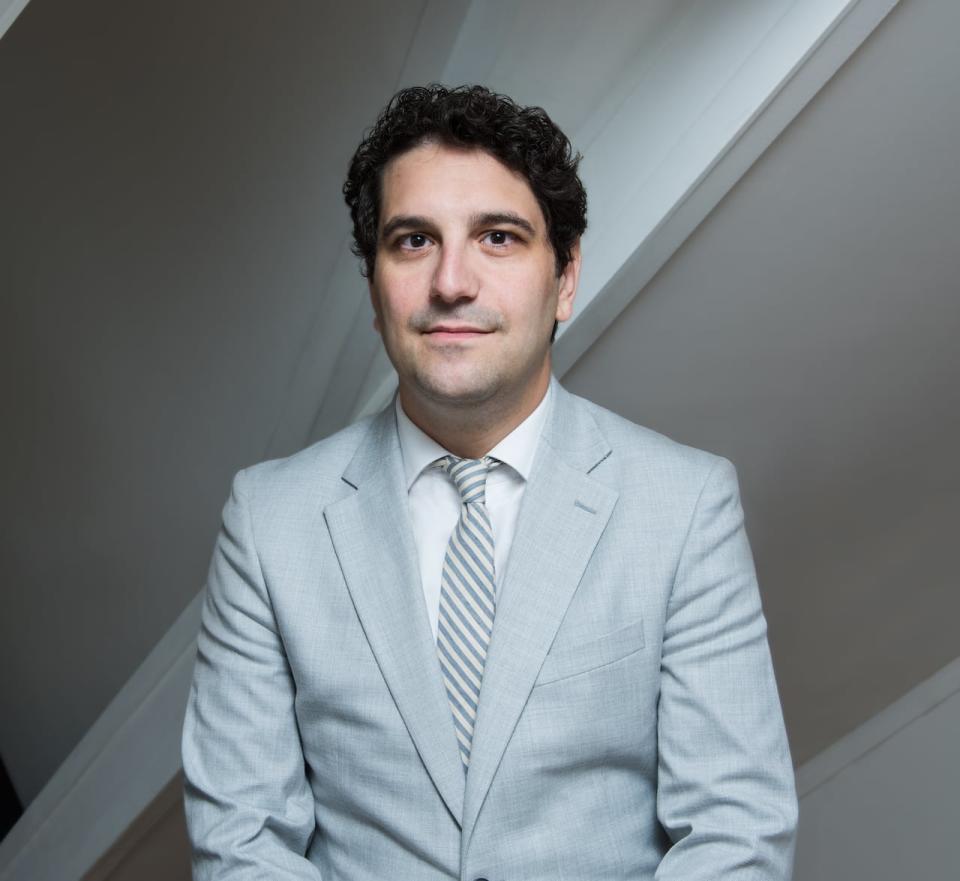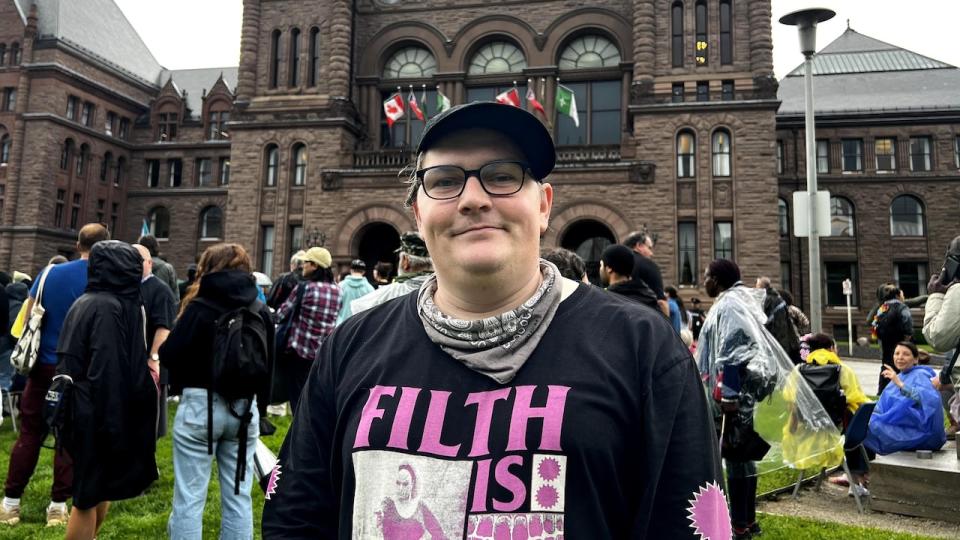Advocates urge Ontario to boost support for supervised drug sites

Advocates and people who use drugs are demanding the Ontario government step up its support for supervised consumption sites, which they say must go hand in hand with treatment programs.
On Tuesday, frontline workers and the Registered Nurses Association of Ontario (RNAO) held a rally at Queen's Park, angry that some sites have closed or may have to due to a lack of funding.
Iyee Saneeh told the crowd at the event that she's over 50 days sober from fentanyl after using it for seven years. She says staff at a consumption site encouraged her to quit and enter treatment.
"They saved my life for long enough to get me into a treatment program, without which I very well may not still be alive," she said.
In an interview with CBC Toronto, Saneeh said both consumption sites and treatment centres should be supported by all levels of government.
"There shouldn't be one or the other."
Her comments come almost two weeks after Premier Doug Ford asked Ottawa to end approvals for safe drug supply sites. Ford's government has also said it intends to enact "enhanced accountability measures" for existing supervised consumption sites following a recent review. Health Canada has said the sites help prevent overdoses, ultimately saving lives and connecting drug users to other health and social services.

Groups that marched to Ontario Legislature on Tuesday, May 28 want supervised consumption sites funded and better access to treatment and recovery programs. (Michael Charles Cole/CBC)
Advocate and researchers say treatment centres alone can't replace consumption sites, and that the two work together.
A joint report released in March, led by the Ontario Drug Policy Research Network and Public Health Ontario, shows most people who died from toxic drugs had low engagement with treatment services.
Barriers in treatment prevent uptake: expert
Dr. Alexander Caudarella, the CEO of the Canadian Centre on Substance Use and Addiction, says one major issue with treatment facilities is that they're disconnected from harm-reduction services, such as consumption sites, and the broader health-care system.
"It's all left up to the individual, the person who's suffering the most at the end of the day, to navigate the system. We wouldn't tolerate that with any other aspect of the health-care system," he said.
Another problem are waitlists. People can be left waiting days, weeks or even months for a spot, depending on their situation, Caudarella said.
"On one given day, from one to another, somebody might be very interested in changing the drug use, and on the next, they are less certain about it," he said. "We need to be able to capture people at the moments when they need most."

Dr. Alexander Caudarella, the CEO of the Canadian Centre on Substance Use and Addiction, says consumption sites and recovery programs go hand in hand. (Nadia Molinari)
Costs can also be a prohibitive factor for those seeking immediate access to a private facility.
RNAO chief executive officer Dr. Doris Grinspun says one of her colleagues paid $40,000 out of pocket for their child to enter treatment. Weeks later, they relapsed, she said.
"There was no follow-up in terms of what is necessary. Treatment alone for most doesn't work," she said.
Caudarella says addiction policies should ensure that a "full spectrum of services" are available.
Taryn Grieder, an addiction researcher and associate professor of psychology at Trent University, says treatment centres provide long-term help by providing coping strategies, but consumption sites work in the short term to reduce overdose deaths and drug-related illness like hepatitis.
"The two approaches need to go hand in hand," she said.
Province says it's focused on recovery
A spokesperson for the province's health minister repeated the government's pledge to "fund more addictions recovery beds and new mobile mental health clinics."
"In this year's historic budget, our government announced an additional investment of $396 million over three years for mental health and addictions services. This includes $124 million to support the Addictions Recovery Fund," said spokesperson Hannah Jensen.
Jensen added that the Ministry of Health is also reviewing all 17 provincial supervised consumption sites following the shooting outside a clinic in Riverdale that killed Karolina Huebner-Makurat, 44, on July 7.
A woman who worked at the site was arrested and charged with accessory after the fact to an indictable offence and obstructing justice in connection with the case.
But rally organizer and front-line worker Lorraine Lam said the incident shouldn't be used to paint all consumption sites with the same brush.
"The safe consumption site was not the cause of the shooting," said Lam.

Harm reduction worker Matt Johnson also has experience using drugs. They say harm reduction is an effective way to keep people safe. (Britnei Bilhete/CBC)
Harm reduction worker Matt Johnson says they don't trust that the Ontario government will invest enough for adequate treatment services, given that it often takes people multiple rounds of rehab to recover.
"I just don't see it from this government," Johnson said.
Meanwhile, Caudarella says it's important that neighbourhoods with consumption sites feel safe, but the two don't need to be at odds.
"People have every right to live in safe neighbourhoods and people have every right to be able to access to services when they need it and where they need it," Caudarella said.


